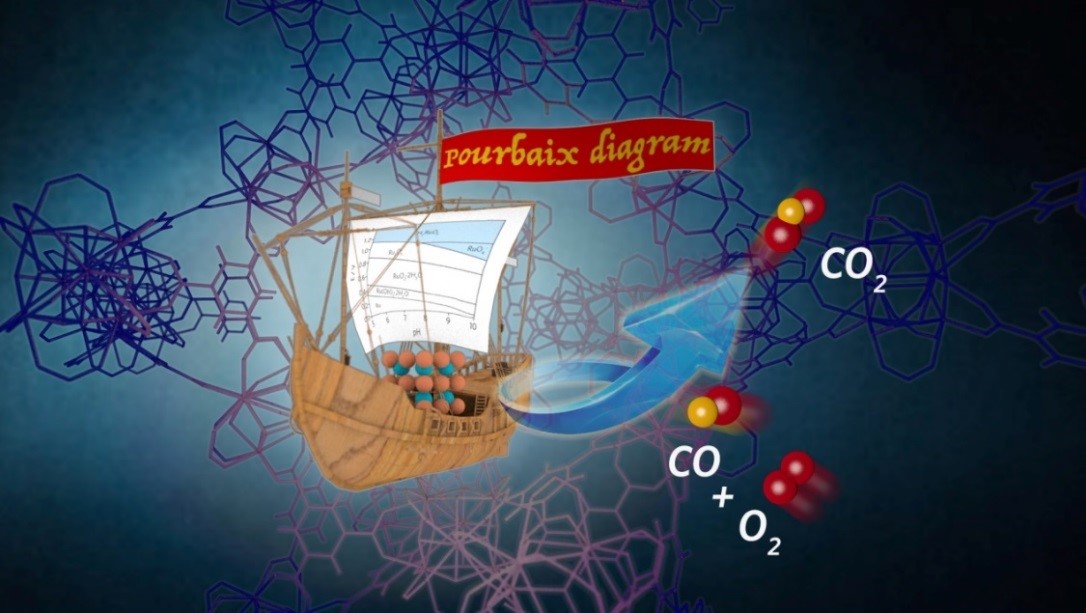Materials confined in a pore with typical dimension of 1-to-2 nm can behave quite differently from their bulk form. Such nano-confinement effect has drawn the attention of researchers working on heterogeneous catalysis and luminescence. Loading the material as a guest inside a nano-pore of a host can, however, be very challenging severely limited by the pore opening size. Researchers from Cambridge with partners QMUL, Chinese Academy of Sciences, University of New South Wales and Sofia University, have figured out a generic way to prepare host-guest systems with the aid of thermodynamic principles. By using Pourbaix diagrams of the guest and its precursor (chemical stability of phases) with respect to the relevant information about the host such as pore and pore-opening size, the group confirmed the boundary conditions for an innovative ship-in-a-bottle synthesis to form the guest in-situ. By using this Pourbaix Enabled Guest Synthesis (PEGS), the research group successfully placed RuO2 inside the nano-cavity of a metal-organic framework (MOF), MOF-808-P with controlled loading. The group has shown that CO adsorption on RuO2@MOF-808-P is weaker than that on conventional RuO2-based catalyst providing the basis for improved catalysis from preventing low-temperature CO poisoning. The results in this Nature Comm. paper demonstrate that RuO2@MOF-808-P is a highly active CO oxidation catalyst even at ambient temperatures.
Figure caption: With the help of Pourbaix diagrams, researchers have found a method for growing a guest material inside a nano-sized pore of a host material akin to building a ship inside a bottle.
T Wang, L Gao, J Hou, SJA Herou, JT Griffiths, W Li, J Dong, S Gao, M-M Titirici, RV Kumar, AK Cheetham, X Bao, Q Fu and SK Smoukov “Rational Approach to Guest Confinement inside MOF Cavities for Low-Temperature Catalysis” Nature Communications, 10 Article number: 1340 (2019)

